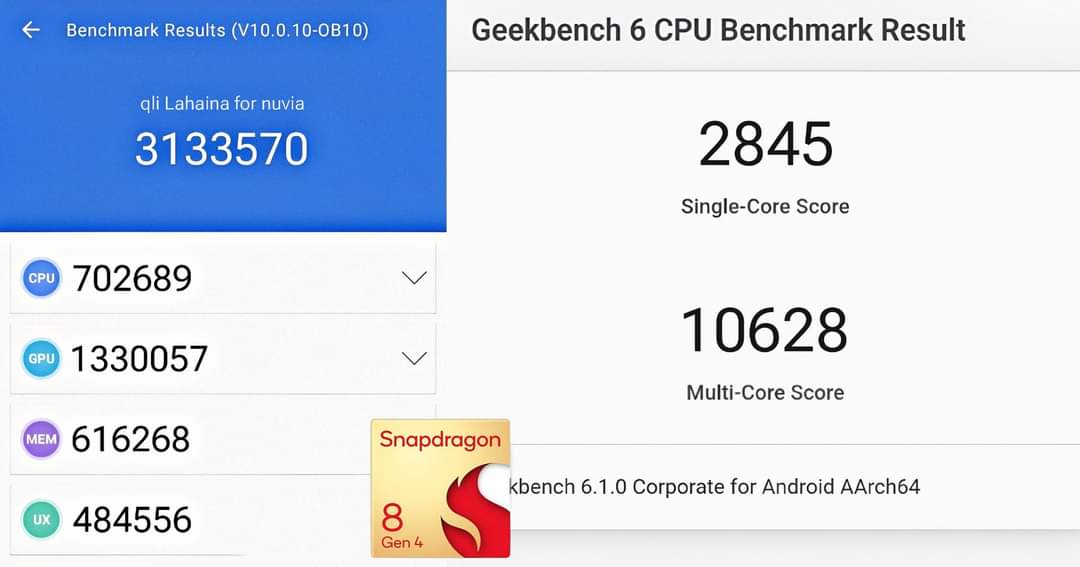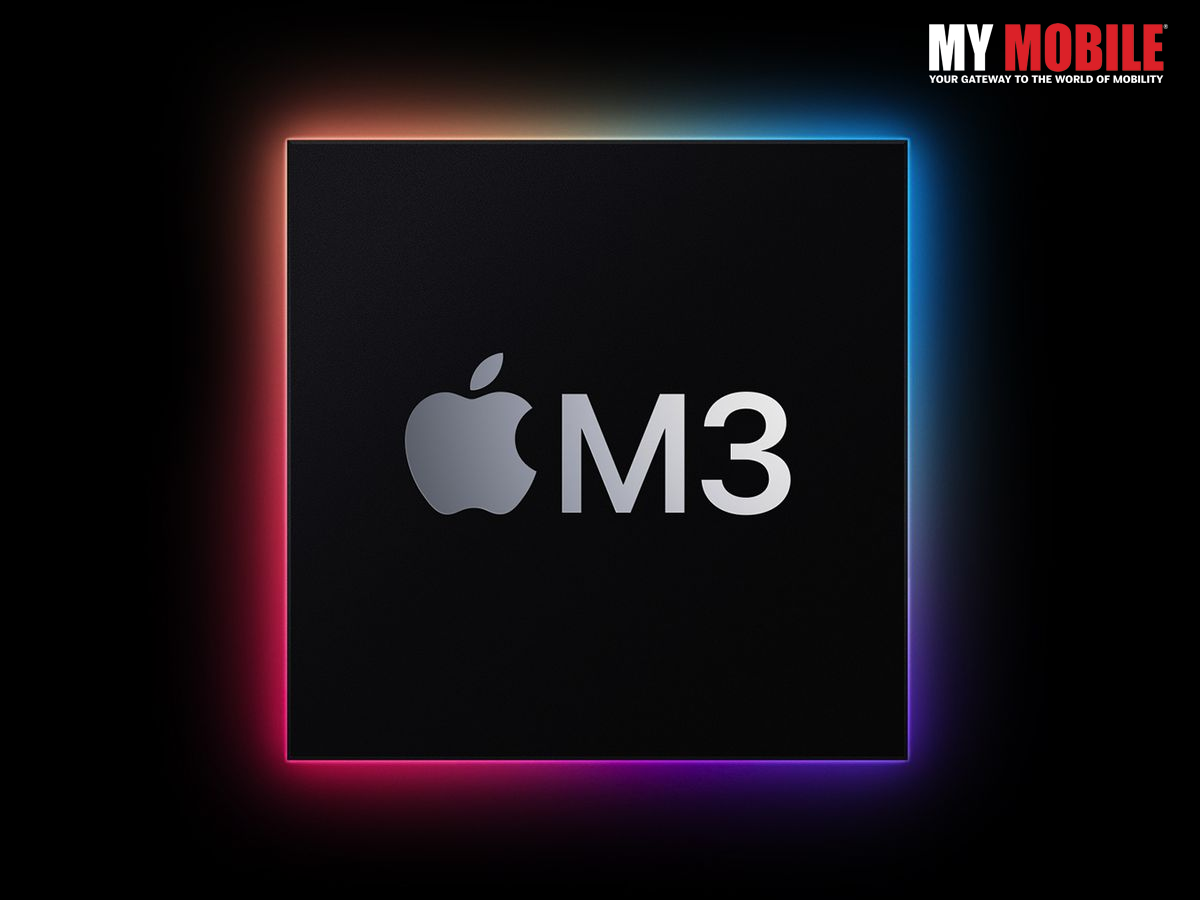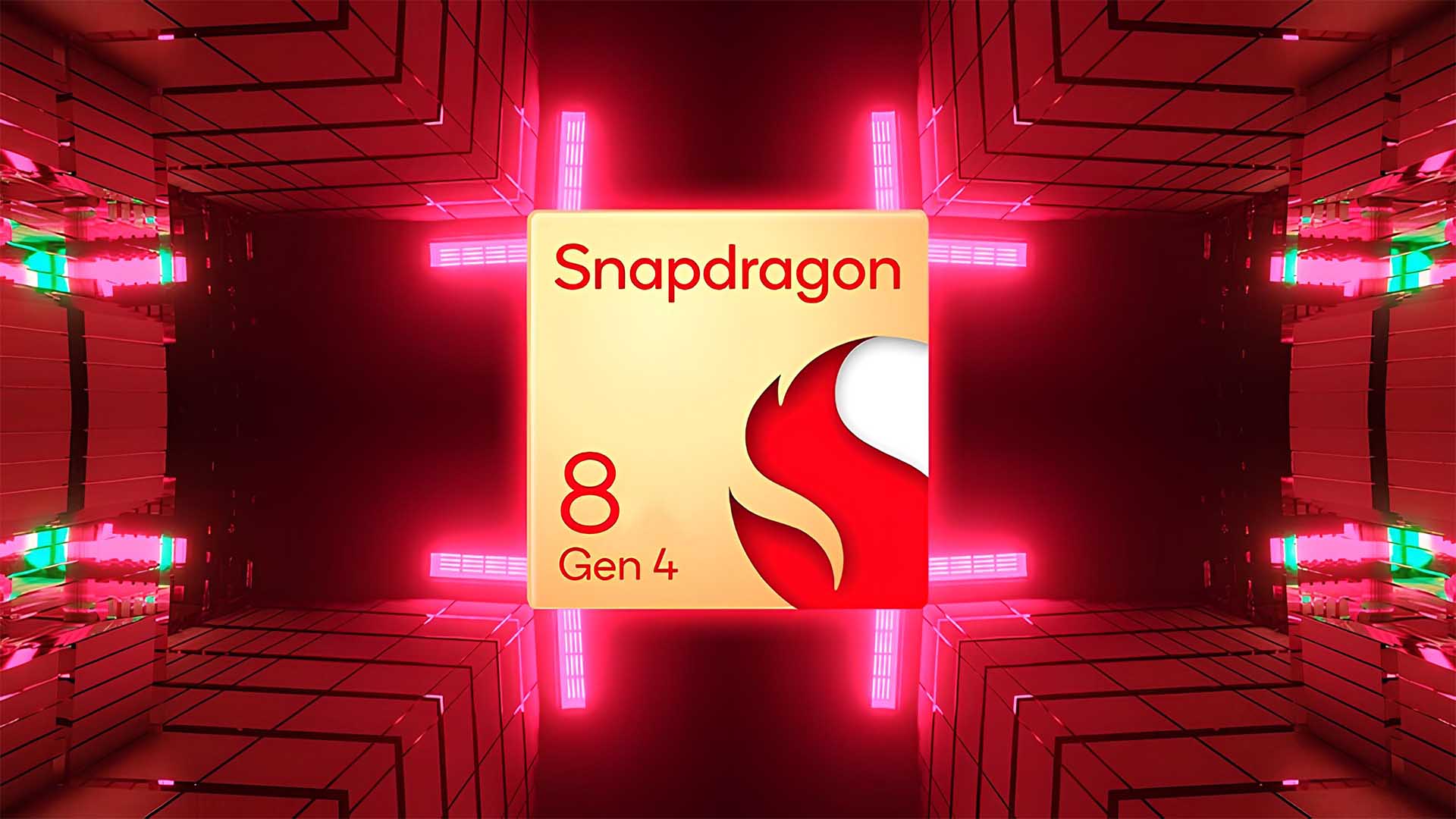Highlights
- Snapdragon 8 Gen 4 reportedly surpasses its predecessor in Geekbench 6 benchmark tests.
- The new SoC shows a 46% improvement in multi-threaded performance.
- The chipset’s configuration includes only ‘Phoenix’ performance cores.
- Snapdragon 8 Gen 4 likely to pose a significant challenge to Apple’s M3 SoC.
Qualcomm’s Snapdragon 8 Gen 4 SoC, the upcoming SoC from the American chipmaker, is already making headlines with its purported performance in the Geekbench 6 benchmark tests.
These scores suggest that Qualcomm’s new chipset is not only surpassing its predecessor, the Snapdragon 8 Gen 3, but also poses a significant challenge to Apple’s M3 SoC.
Snapdragon 8 Gen 4’s Benchmark Triumph

Recent reports from Geekbench 6 indicate that the Snapdragon 8 Gen 4 has achieved a single-core score of 2,845 and a multi-core score of 10,628.
When compared to its predecessor, which scored 7,249 in the Galaxy S24 Ultra, the Snapdragon 8 Gen 4 shows a remarkable 46 percent improvement in multi-threaded performance.
This leap in performance is notable even in the single-core results, where the Snapdragon 8 Gen 4 demonstrates its prowess against the latest M-series SoCs from Apple.
Performance Cores: The Secret to Success

The Snapdragon 8 Gen 4’s exceptional performance is attributed to its configuration, which reportedly includes only ‘Phoenix’ performance cores.
This design choice, similar to that of the Dimensity 9300, eliminates efficiency cores.
While this could potentially lead to higher power consumption, it significantly boosts multi-core performance.
The chipset is rumoured to be produced using TSMC’s 3nm ‘N3E’ process, which could help offset the increased power usage with improved efficiency.
Close Competition with Apple’s M3

In the context of its competition with Apple’s M3, the Snapdragon 8 Gen 4 holds its own.
The M3 chipset is only slightly ahead in both single-core and multi-core scores, showcasing Qualcomm’s strategic shift to a custom CPU design.
This decision could mean higher costs for phone manufacturers compared to the Snapdragon 8 Gen 3, but the performance benefits might justify the price.
Unanswered Questions and Speculations

Despite these impressive figures, there are still aspects that remain unclear. For instance, the power consumption metrics of the Snapdragon 8 Gen 4 during these tests have not been revealed.
Understanding the power efficiency is crucial, especially when considering the chipset’s performance capabilities.
Additionally, there’s speculation regarding the authenticity of these scores, particularly since the AnTuTu result references the codename ‘Lahaina,’ associated with the Snapdragon 888, rather than ‘Pakala,’ the expected codename for the Snapdragon 8 Gen 4.
As such, we advise you to take all this information with a giant grain of salt.
FAQs
What is the performance of Snapdragon 8 Gen 4 in the Geekbench 6 benchmark tests?
The Snapdragon 8 Gen 4 has achieved a single-core score of 2,845 and a multi-core score of 10,628 in the Geekbench 6 benchmark tests.
How does the Snapdragon 8 Gen 4 compare to its predecessor, the Snapdragon 8 Gen 3?
The Snapdragon 8 Gen 4 shows a remarkable 46 percent improvement in multi-threaded performance compared to its predecessor, which scored 7,249 in the Galaxy S24 Ultra.
What is the configuration of the Snapdragon 8 Gen 4 and how does it contribute to its performance?
The Snapdragon 8 Gen 4’s exceptional performance is attributed to its configuration, which reportedly includes only ‘Phoenix’ performance cores. This design choice eliminates efficiency cores, potentially leading to higher power consumption but significantly boosting multi-core performance.
How does the Snapdragon 8 Gen 4 compare to Apple’s M3 SoC?
In the context of its competition with Apple’s M3, the Snapdragon 8 Gen 4 holds its own. The M3 chipset is only slightly ahead in both single-core and multi-core scores.
What are the unanswered questions and speculations about the Snapdragon 8 Gen 4?
The power consumption metrics of the Snapdragon 8 Gen 4 during these tests have not been revealed. Additionally, there’s speculation regarding the authenticity of these scores, particularly since the AnTuTu result references the codename ‘Lahaina,’ associated with the Snapdragon 888, rather than ‘Pakala,’ the expected codename for the Snapdragon 8 Gen.
What are the main internal changes found in the M3 iMac compared to the M1 model?
The M3 iMac, as revealed by iFixit’s teardown, largely mirrors the M1 iMac in design. However, a significant change is the reduction of coin battery cells from two to one.
What advanced features does the new M3 iMac offer?
The M3 iMac boasts a 24-inch 4.5K Retina display, Wi-Fi 6E, Bluetooth 5.3, and up to four USB-C ports.
It also includes a 1080p FaceTime camera, studio-quality mics, and a six-speaker system supporting Spatial Audio with Dolby Atmos.
How does the stand option for the M3 iMac impact its setup?
Apple offers the M3 iMac with a standard stand or a VESA mount adapter. Choosing the VESA mount requires some disassembly, which is an important consideration for buyers.
What is the starting price of the M3 iMac in India, and what does it include?
In India, the M3 iMac starts at Rs 1,34,900 for the 8GB + 256GB version with an 8-core GPU. This price includes the color-matched Magic Keyboard with Touch ID.
What distinguishes MediaTek’s Dimensity 9400 from Qualcomm’s Snapdragon 8 Gen 4?
MediaTek’s Dimensity 9400 is expected to feature a novel core configuration with 3 Prime Cortex-X5 and 5 Cortex Performance cores, potentially offering superior performance and efficiency compared to Qualcomm’s Snapdragon 8 Gen 4, which is rumored to focus on high-performance cores.
How does the Snapdragon 8 Gen 4’s design strategy differ from previous models?
Qualcomm’s strategy for the Snapdragon 8 Gen 4 involves a significant shift towards using custom Oryon cores instead of ARM’s Cortex cores.
This change could lead to increased costs but potentially enhanced performance, setting it apart from its predecessors and MediaTek’s approach.
What are the potential implications of MediaTek’s use of TSMC’s N3E fabrication process?
By adopting TSMC’s N3E fabrication process for the Dimensity 9400, MediaTek aims to address battery efficiency and thermal management issues.
This approach may resolve overheating concerns present in previous models and enhance overall chipset performance.
Why are Qualcomm and MediaTek choosing TSMC over Samsung for 3nm chipsets?
Qualcomm and MediaTek are opting for TSMC for their 3nm chipset production due to TSMC’s advanced manufacturing capabilities and proven track record in delivering efficient, high-quality chipsets.
TSMC’s recent successes, including the production of Apple’s A17 Pro SoC, have bolstered its reputation as a leading chipset manufacturer.
How is TSMC’s production capacity changing in response to the demand for 3nm chipsets?
TSMC is ramping up its production capacity to meet the increasing demand for 3nm chipsets.
Currently capable of producing about 70,000 silicon wafers per month in the 3nm architecture, TSMC plans to boost this number to 100,000 by the following year, indicating significant growth and commitment to this technology.
Also Read: MediaTek Dimensity 9400 Could Likely Surpass Qualcomm’s Snapdragon 8 Gen 4
Also Read: Qualcomm Snapdragon 8 Gen 4 Could Have New Architecture With No Efficiency Cores
Also Read: Apple’s M3 iMac Teardown Reveals Subtle Changes and High-End Features
